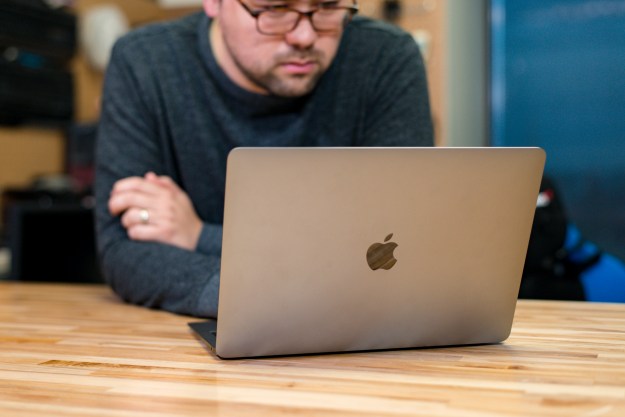
On a recent Friday evening, I found myself listening to a dozen founders chat about what it takes to build a startup from scratch. The conversation felt natural and spontaneous, as if I had stumbled into some exclusive Silicon Valley party. Thing is, it was anything but exclusive. The fireside chat at one point had 2,000 attendees, and it swiftly turned into a public AMA (Ask Me Anything) forum. The founders kept switching between fielding questions from the crowd and discussing their startup journeys.
That town hall-esque discussion was real — except I was sitting in my reading nook’s lounge chair at home. And when the founders drifted into topics I wasn’t particularly keen on, I was able to slip into a different room that was hosting a quiz night. An hour later, I was gabbing on about the previous night’s football match with a bunch of people I’ve never met.
I did all this on an app called Clubhouse, an audio-only social network that has sent Silicon Valley into a frenzy.
The social media battleground: Chat rooms
With people scrambling for new (screenless) avenues to connect in a pandemic, Clubhouse’s freewheeling and algorithm-free conversations have emerged as a breath of fresh air. The buzzy app allows you to host and join chat rooms where you can talk about anything from the latest controversies in media to Elon Musk’s Bitcoin strategy.
Clubhouse has accelerated a shift among social media giants to audio products.
To sign up for Clubhouse, you need an invite and an iPhone — a set of traits that offer a sense of exclusivity amid an information-hungry industry vying for your attention. The numbers speak for themselves. In a matter of weeks, Clubhouse downloads soared from 2 million to over 10 million (and counting). Invites are selling for hundreds of dollars on eBay. More than 2 million users are actively visiting it every week, and the app has even managed to attract high-profile voices such as Elon Musk, Mark Zuckerberg, and Oprah Winfrey.

More importantly, Clubhouse has accelerated a shift among social media giants to audio products. Soon after Clubhouse exploded in popularity, Twitter rolled out its chat room service called Spaces. Others, including Facebook and Discord, are expected to launch similar apps in the next few weeks.
The rise of audio-based social apps also plugs well into a quiet podcast battle happening between entertainment conglomerates like Amazon, Apple, and Spotify. These companies have spent much of the last two years ramping up their podcast offerings, roping in celebrities for exclusive content and acquiring smaller startups to get a head start.
Is audio the future of web content?
It’s no longer a niche, either: In a world where overall media and entertainment growth stands at a measly 4 percent, reports estimate the audiobook and podcast market to grow by 25 percent and 30 percent, respectively, this year.
As someone who’s constantly surrounded by screens, the pivot to audio seemed out of place to me. But I’m also constantly looking for new ways to cut down my screen time. So I set out to find what the buzz is all about and tried to primarily consume online content through audio-first apps for a week. Here’s what I learned.
The process to set up this experiment proved surprisingly simple for me. Turns out, most of my apps (including Netflix) already have a feature that lets users listen instead of read or watch.

Clubhouse and Twitter Spaces replaced the core of my social activity, and I was spending at least two hours engaging in rooms that interested me. What delighted me most was that I played the audio in the background while doing something else on my phone like responding to texts. It even helped me with my terrible texting habits since I had more time on my hands to check and reply to messages. Before, I used to end up in rabbit holes on social apps and lose track of time.
That’s not to say it was perfect, though.
In my downtime, I turned to audiobooks and podcasts, which, thanks to aggressive investments by Amazon and Spotify, are available in abundance. Choosing one from the vast catalogs was a nightmare and, in the end, I simply picked an audio version of the book I was reading on a Kindle.
The audiobook’s illustrious narration was an experience of its own that left me wanting more. Compared to my usual reading sessions, listening to an audiobook was more immersive and the narrator’s rich emotions made me feel almost like I was living through the story’s plot.
That’s not to say it was perfect, though. Looking up words is cumbersome, and I couldn’t whip up a quick browser tab to further research a fact or an intriguing concept an author may have mentioned.
The presence of a smart speaker in nearly every corner of my house also made streaming audiobooks and podcasts even easier. I was able to instantly resume what I was listening to while cooking or working out at home.
In a few days, I was hooked and reached a point where I was listening to even webpages thanks to Google’s read-it-aloud tool in the Google Assistant, as well as the read-it-later app, Pocket’s dictation option.
Can audio-only apps save you from screen addiction?
What I found especially refreshing is how much more I was aware of what I was listening to and for how long. Years of passively scrolling through social feeds have hacked our minds into consuming as much as we can without quite processing anything. When I tune into a podcast or a Clubhouse room, I am more focused and invested. On top of that, switching to audio has been the most effective outlet for me to tackle screen fatigue and it gave my eyes the long-overdue break they needed.
But why would tech companies spend resources on a product that takes the attention away from screens?
The battle for your ear
Video and the allure of visuals are not going anywhere. Even if you find apps like Clubhouse compelling, you’ll most likely still continue to binge-watch Netflix shows and check your Instagram feed every now and then.
But at the same time, there’s only so much more visual content tech giants can fit in your day. There are moments in your life where it’s not possible for you to stare at a screen. It can be when you are driving or going out for a run. This is what companies are targeting with audio-first platforms and, from what I can tell from my weeklong test, they’re on the right path.
Although I don’t see myself experiencing the internet exclusively through a pair of headphones, audio-based social apps have managed to carve out a place for themselves in my phone. Their personal and conversational touch is just what you and I need to escape the algorithms dictating what we read and watch in our feeds.



